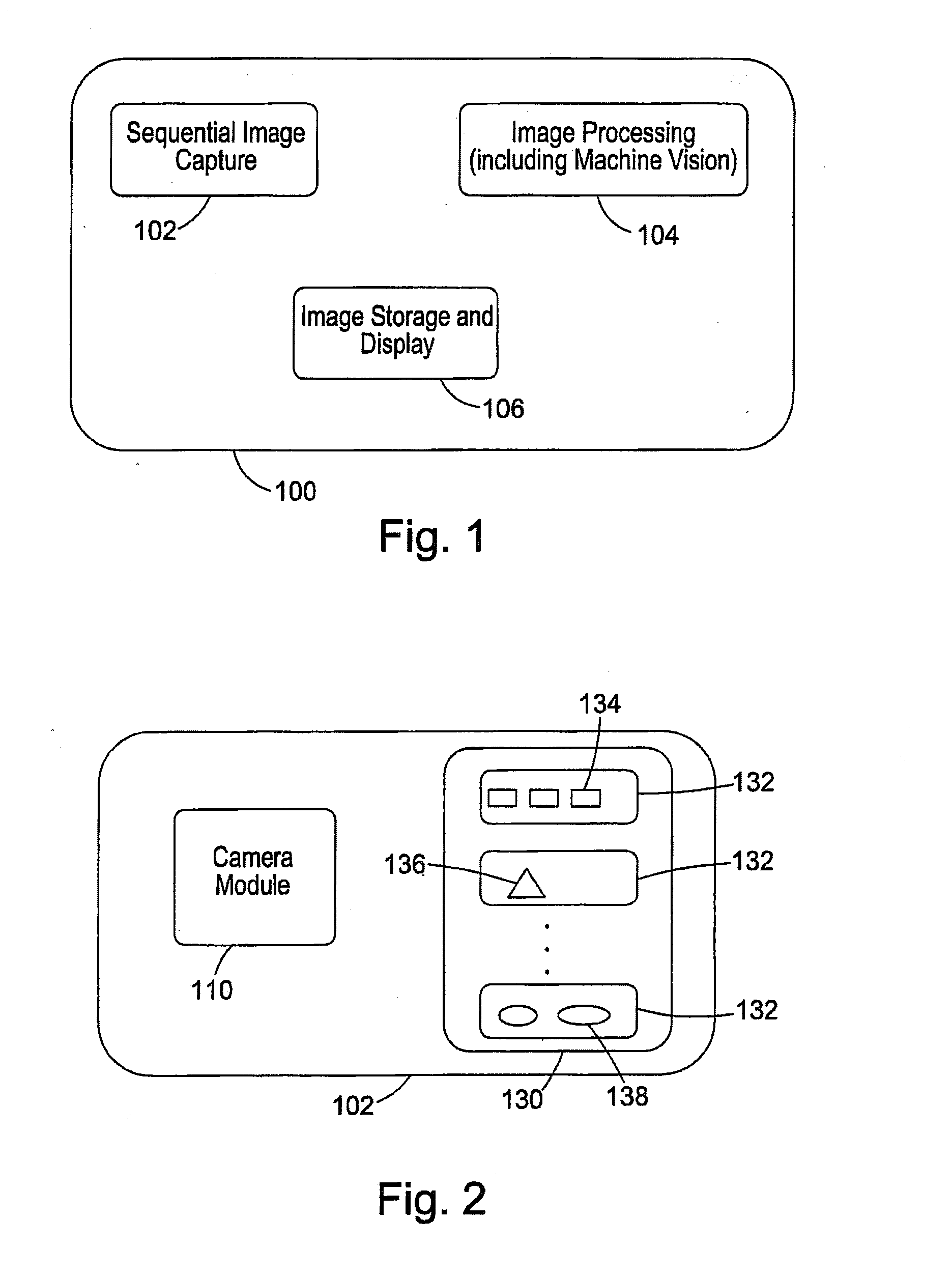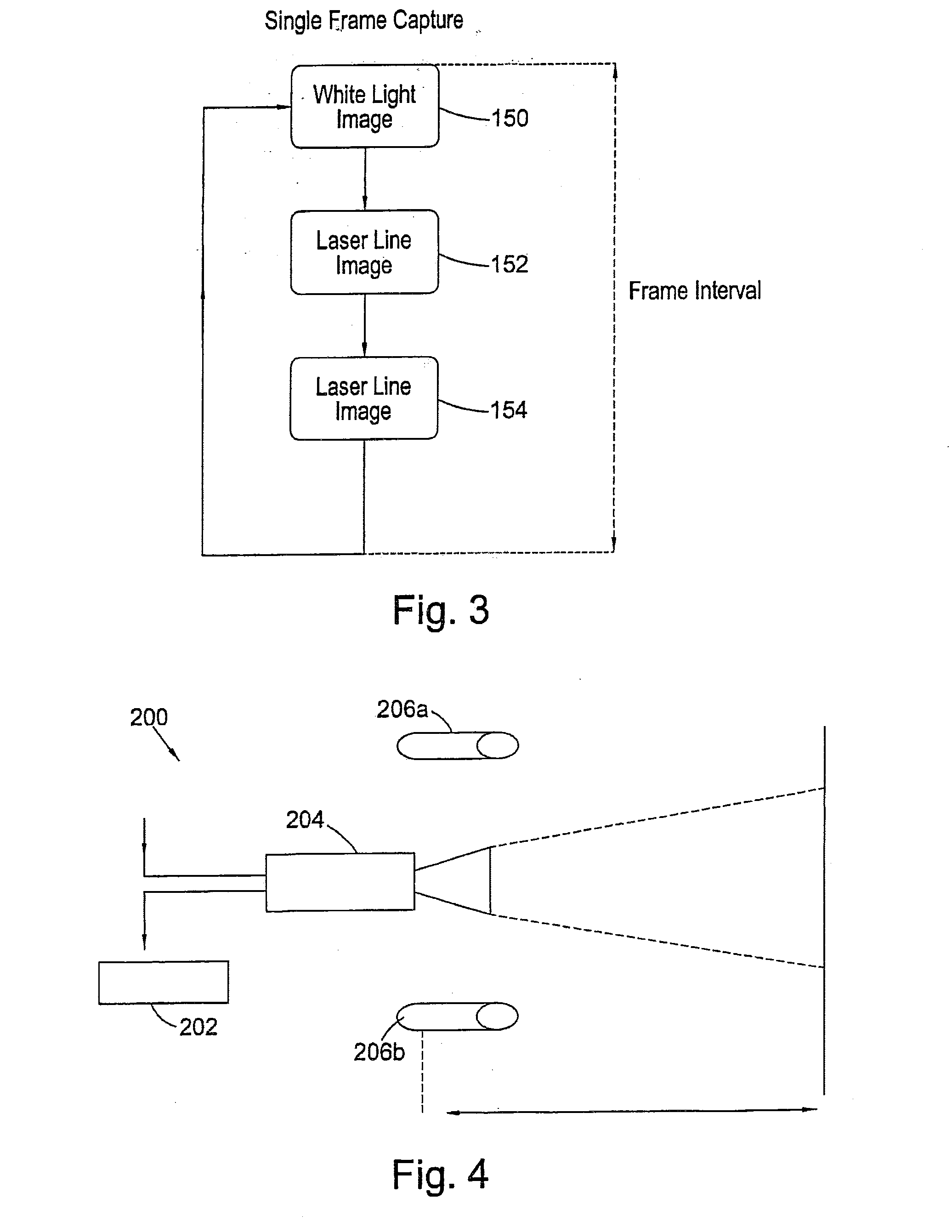Processing survey data of an underwater scene
a technology of underwater scene and survey data, applied in the field of processing survey data of underwater scene, can solve the problems of reducing the resolution of captured images, affecting the concatenation effect, and affecting the effect of image enhancemen
- Summary
- Abstract
- Description
- Claims
- Application Information
AI Technical Summary
Benefits of technology
Problems solved by technology
Method used
Image
Examples
examples
[0189]One of the simplest embodiments of the present invention is to capture a white light image of a scene and a pair of laser lines image of that same scene. The laser lines image can be used to provide range and dimension information for the white light image, such as the distance to objects in the image and sizes of those objects. This information can be overlaid on the white light image, or otherwise included as metadata with the image to form the augmented output image. It is also possible to carry out edge detection on the white light image, and highlight any edges found in the white light image. In this example, the whole white light image is included in the augmented output image, the range and dimensioning are aspects derived from the laser lines image, and any highlighted edges or info derived therefrom are aspects derived from the white light image. Certain information would be derived from a combination of the white light image and the laser lines image, for example the...
PUM
 Login to View More
Login to View More Abstract
Description
Claims
Application Information
 Login to View More
Login to View More - R&D
- Intellectual Property
- Life Sciences
- Materials
- Tech Scout
- Unparalleled Data Quality
- Higher Quality Content
- 60% Fewer Hallucinations
Browse by: Latest US Patents, China's latest patents, Technical Efficacy Thesaurus, Application Domain, Technology Topic, Popular Technical Reports.
© 2025 PatSnap. All rights reserved.Legal|Privacy policy|Modern Slavery Act Transparency Statement|Sitemap|About US| Contact US: help@patsnap.com



